Rudolf Mayer
Attackers Can Do Better: Over- and Understated Factors of Model Stealing Attacks
Mar 08, 2025Abstract:Machine learning models were shown to be vulnerable to model stealing attacks, which lead to intellectual property infringement. Among other methods, substitute model training is an all-encompassing attack applicable to any machine learning model whose behaviour can be approximated from input-output queries. Whereas prior works mainly focused on improving the performance of substitute models by, e.g. developing a new substitute training method, there have been only limited ablation studies on the impact the attacker's strength has on the substitute model's performance. As a result, different authors came to diverse, sometimes contradicting, conclusions. In this work, we exhaustively examine the ambivalent influence of different factors resulting from varying the attacker's capabilities and knowledge on a substitute training attack. Our findings suggest that some of the factors that have been considered important in the past are, in fact, not that influential; instead, we discover new correlations between attack conditions and success rate. In particular, we demonstrate that better-performing target models enable higher-fidelity attacks and explain the intuition behind this phenomenon. Further, we propose to shift the focus from the complexity of target models toward the complexity of their learning tasks. Therefore, for the substitute model, rather than aiming for a higher architecture complexity, we suggest focusing on getting data of higher complexity and an appropriate architecture. Finally, we demonstrate that even in the most limited data-free scenario, there is no need to overcompensate weak knowledge with millions of queries. Our results often exceed or match the performance of previous attacks that assume a stronger attacker, suggesting that these stronger attacks are likely endangering a model owner's intellectual property to a significantly higher degree than shown until now.
Identifying Appropriate Intellectual Property Protection Mechanisms for Machine Learning Models: A Systematization of Watermarking, Fingerprinting, Model Access, and Attacks
Apr 22, 2023Abstract:The commercial use of Machine Learning (ML) is spreading; at the same time, ML models are becoming more complex and more expensive to train, which makes Intellectual Property Protection (IPP) of trained models a pressing issue. Unlike other domains that can build on a solid understanding of the threats, attacks and defenses available to protect their IP, the ML-related research in this regard is still very fragmented. This is also due to a missing unified view as well as a common taxonomy of these aspects. In this paper, we systematize our findings on IPP in ML, while focusing on threats and attacks identified and defenses proposed at the time of writing. We develop a comprehensive threat model for IP in ML, categorizing attacks and defenses within a unified and consolidated taxonomy, thus bridging research from both the ML and security communities.
I Know What You Trained Last Summer: A Survey on Stealing Machine Learning Models and Defences
Jun 16, 2022



Abstract:Machine Learning-as-a-Service (MLaaS) has become a widespread paradigm, making even the most complex machine learning models available for clients via e.g. a pay-per-query principle. This allows users to avoid time-consuming processes of data collection, hyperparameter tuning, and model training. However, by giving their customers access to the (predictions of their) models, MLaaS providers endanger their intellectual property, such as sensitive training data, optimised hyperparameters, or learned model parameters. Adversaries can create a copy of the model with (almost) identical behavior using the the prediction labels only. While many variants of this attack have been described, only scattered defence strategies have been proposed, addressing isolated threats. This raises the necessity for a thorough systematisation of the field of model stealing, to arrive at a comprehensive understanding why these attacks are successful, and how they could be holistically defended against. We address this by categorising and comparing model stealing attacks, assessing their performance, and exploring corresponding defence techniques in different settings. We propose a taxonomy for attack and defence approaches, and provide guidelines on how to select the right attack or defence strategy based on the goal and available resources. Finally, we analyse which defences are rendered less effective by current attack strategies.
The FeatureCloud AI Store for Federated Learning in Biomedicine and Beyond
May 12, 2021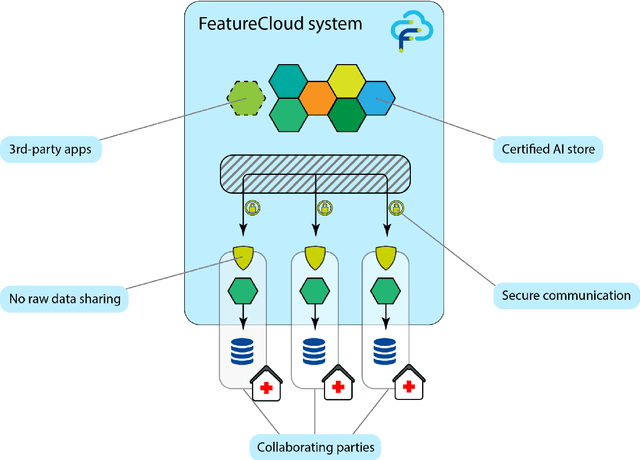
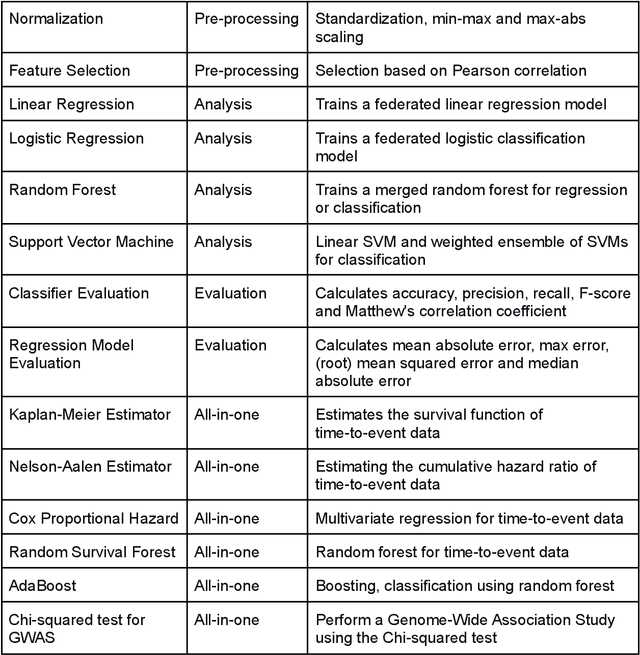
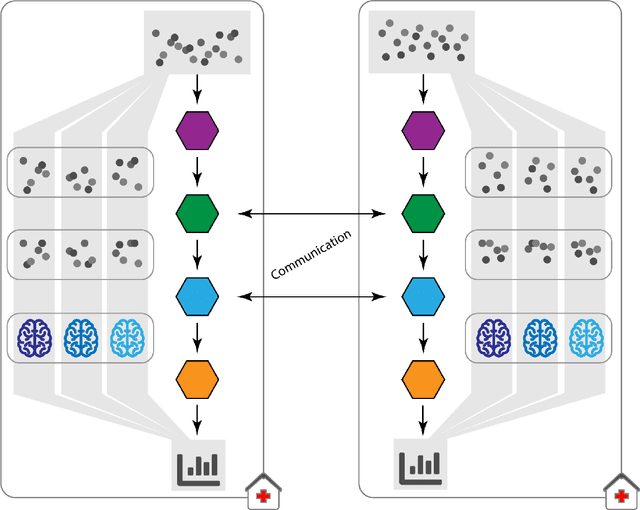
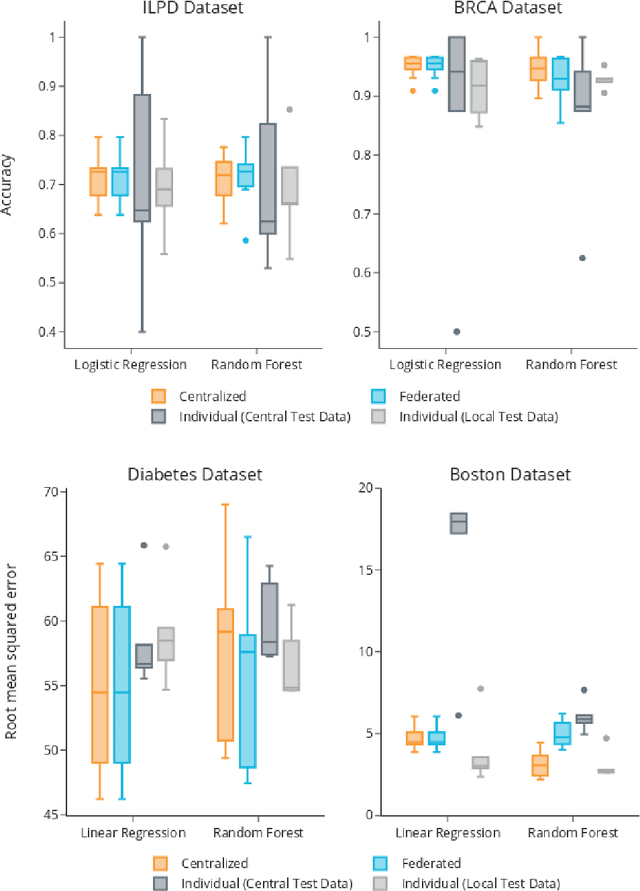
Abstract:Machine Learning (ML) and Artificial Intelligence (AI) have shown promising results in many areas and are driven by the increasing amount of available data. However, this data is often distributed across different institutions and cannot be shared due to privacy concerns. Privacy-preserving methods, such as Federated Learning (FL), allow for training ML models without sharing sensitive data, but their implementation is time-consuming and requires advanced programming skills. Here, we present the FeatureCloud AI Store for FL as an all-in-one platform for biomedical research and other applications. It removes large parts of this complexity for developers and end-users by providing an extensible AI Store with a collection of ready-to-use apps. We show that the federated apps produce similar results to centralized ML, scale well for a typical number of collaborators and can be combined with Secure Multiparty Computation (SMPC), thereby making FL algorithms safely and easily applicable in biomedical and clinical environments.
Privacy-preserving Artificial Intelligence Techniques in Biomedicine
Jul 22, 2020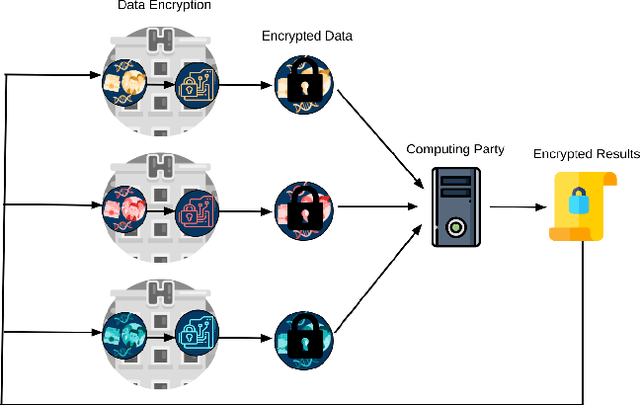
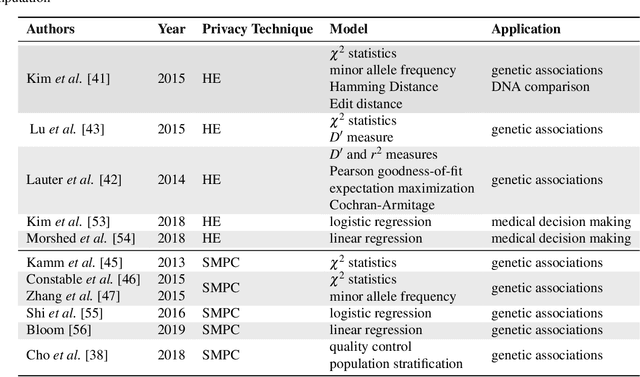
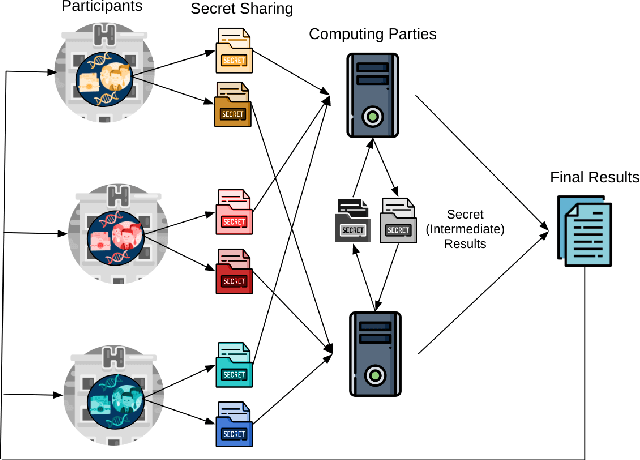
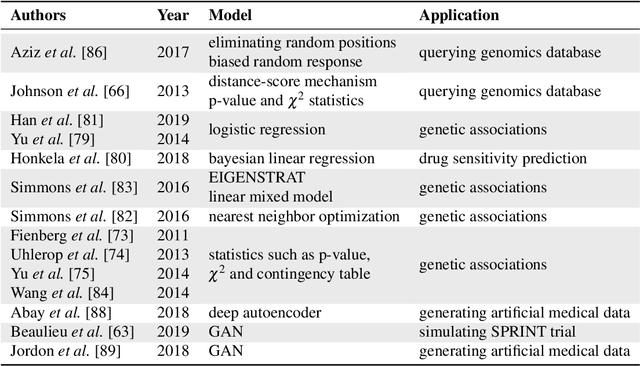
Abstract:Artificial intelligence (AI) has been successfully applied in numerous scientific domains including biomedicine and healthcare. Here, it has led to several breakthroughs ranging from clinical decision support systems, image analysis to whole genome sequencing. However, training an AI model on sensitive data raises also concerns about the privacy of individual participants. Adversary AIs, for example, can abuse even summary statistics of a study to determine the presence or absence of an individual in a given dataset. This has resulted in increasing restrictions to access biomedical data, which in turn is detrimental for collaborative research and impedes scientific progress. Hence there has been an explosive growth in efforts to harness the power of AI for learning from sensitive data while protecting patients' privacy. This paper provides a structured overview of recent advances in privacy-preserving AI techniques in biomedicine. It places the most important state-of-the-art approaches within a unified taxonomy, and discusses their strengths, limitations, and open problems.
 Add to Chrome
Add to Chrome Add to Firefox
Add to Firefox Add to Edge
Add to Edge